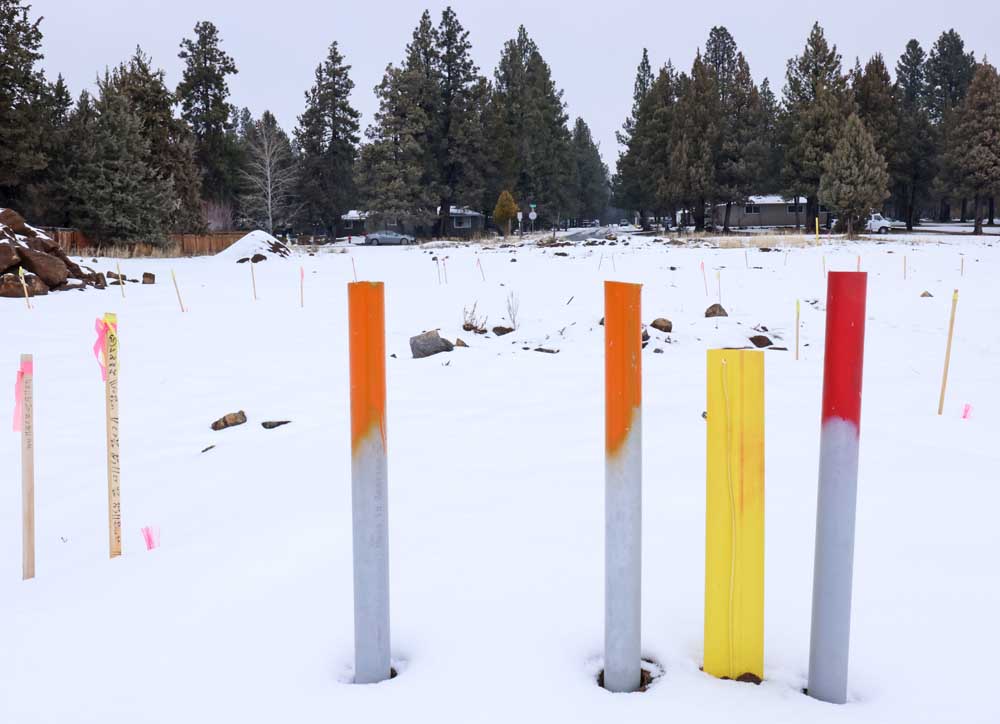Bend’s newest policy is meant to protect urban tree canopy
Published 5:30 am Saturday, June 22, 2024

- Tree clearing in contrast: In the foreground, a parcel of land with no trees being developed in southeast Bend, and in the background, a subdivision surrounded by trees.
Rampant development in Bend has resulted in widespread felling of trees for the development of residential neighborhoods and commercial properties.
On Thursday, the City Council approved new codes it believes will protect more trees and better preserve Bend’s urban canopy.
The amendments go into effect on Aug. 16, according to the city.
On Thursday the Bend City Council also approved adding an arborist position to the city staff.
The process leading up to the approval of the tree code change began over a year ago after community members voiced opposition to numerous development projects on private property that left land devoid of trees.
Concerns over the loss of trees include increasing temperatures in the urban footprint due to a loss of shade, a phenomenon known as the heat-island effect.
Others say chopping down trees accelerates climate change and global warming because trees sequester carbon.
In a statement, Bend Mayor Melanie Kebler said the updated code strikes a balance by preserving trees while also allowing homes to be built within the urban growth boundary.
Taking an inventory
Adoption of the tree code means that lots must have all trees 6 inches in diameter or greater identified, inventoried and mapped before they can be developed, unless they are 1 acre or less and include a residential development. The diameter of the tree is measured at the trunk, 4.5 feet above ground level.
Developers will be required to inventory all the regulated trees on their lands and retain a certain percentage of them after construction is complete. Once a lot is inventoried, a developer will be faced with a few options.
One is to preserve 20% of trees that are 20 inches in diameter or greater. A second option involves preserving an amount of trees equal to 25% of the combined diameter of trees on the property that are greater than 6 inches in diameter.
For the trees cannot that cannot be saved, developers will be required to plant new trees on-site or make a payment instead of preservation.
“The payment in lieu of tree preservation is required for each replacement tree that is not planted on-site,” said Pauline Hardy, a senior planner with the city of Bend.
Hardy added that the funds collected to cut down trees must be spent on costs directly related to the maintenance of existing trees in the public right of way or other city-owned property. They can also be used to increase Bend’s urban tree canopy citywide.
More exact details of the fees and how they will be used will discussed in August, said Hardy. Some discounts may be offered if the developer is building an affordable housing project.
Review process
All the regulations will be reviewed annually to assess their effectiveness for at least five years. Bend City Councilor Ariel Mendez said the code is a good start but he anticipates changes in the future.
“I’m glad to see we have something in place because what we had before was not working.”
Mendez questioned the ability for a developer to pay money instead of preserving trees.
“Trees are a community benefit and instead of charging people to cut down a tree maybe we should be paying them to keep mature trees and plant new ones. That would be an ideal way of recognizing the community benefits that trees provide,” said Mendez.
“I think we need to see how it goes and make adjustments as necessary.”
Housing demand puts more west side ponderosas at risk








